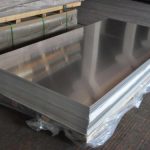What is 5052 h32 aluminum sheet?
The 5052 is a high-density aluminum alloy manufactured by the Wanda Alu. It was initially designed in 1932, as an alternative to the existing 3003 alloy. The new alloy was developed for use in aircraft components and engine cowlings due to its improved corrosion resistance and strength. It is also used for various other purposes … Read more

